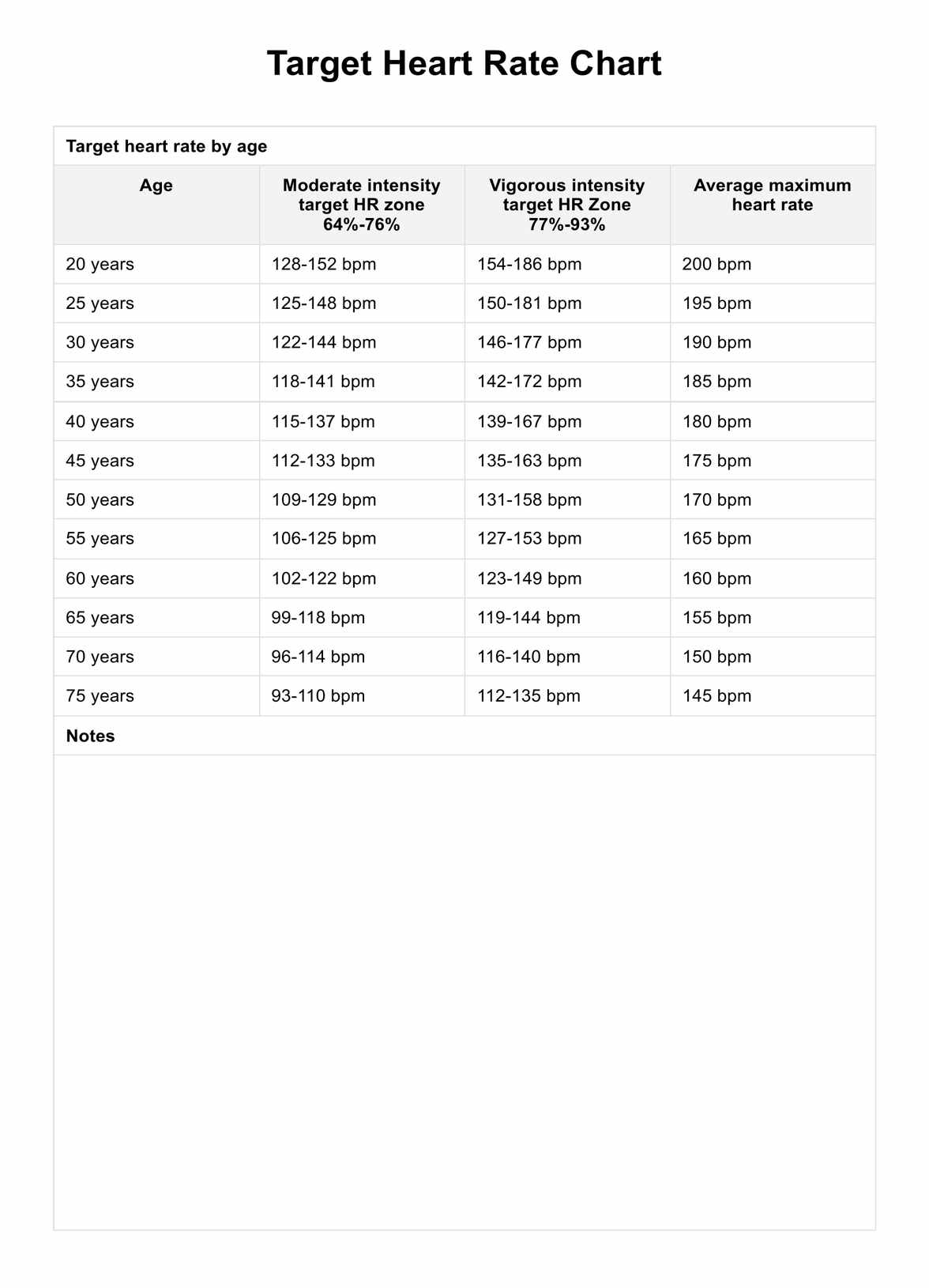Individuals or healthcare practitioners who want to track progress and ensure their patients exercise within the appropriate intensity zones typically request a target heart rate chart.

Target Heart Rate
A Target Heart Rate Chart is a tool that indicates the optimal heart rate range during aerobic exercise to ensure effective cardiovascular conditioning.
Target Heart Rate Template
Commonly asked questions
Individuals of all fitness levels use target heart rate charts to determine their ideal range during exercise, monitor their heart rate, track their progress, identify potential health concerns, and optimize their exercise routine.
To use a target heart rate chart, determine your maximum heart rate by subtracting your age from 220, find your age group on the chart, and monitor your heart rate during exercise using a heart rate monitor or fitness tracker. Adjust your exercise intensity if your heart rate falls below or exceeds the target zone.
EHR and practice management software
Get started for free
*No credit card required
Free
$0/usd
Unlimited clients
Telehealth
1GB of storage
Client portal text
Automated billing and online payments











